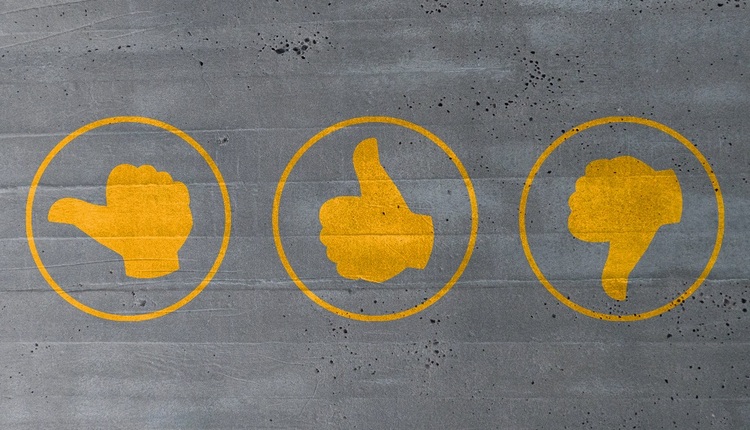What�s in the box? It could be a teddy bear in a plastic bag, requiring no damage protection other than the box, or it could be fine English bone china, which could present a challenge. In-the-box protection supplies are available for everything from the bear to the china, but it will require information and testing to determine what is the best for you. Answers lie in such areas as cost of the materials used, ease of use, the customer�s �out-of-the box experience,� branding opportunities and environmental impact.
Why do we even need dunnage (old term) or in-the-box protective packaging (new term)? Well, we need to consider the difference between non-dynamic and dynamic shipping conditions. Before the days of catalogs and e-commerce, we simply went to the local retailer, purchased and carried home all of our needs. As such, the items were shipped from the manufacturer in case lots placed and secured on a pallet into a truck and delivered to the retailer where the goods went onto the shelf.
With the advent of the parcel shipping environment promoted by catalogs and Internet shopping, we now have the dynamic shipping conditions where items are picked, packed and shipped individually. It�s no small wonder we get things that are broken, and it is not always due to mistreatment along the way, but rather due to the fact that the item was not protected in such a way to make it ready to face the grueling dynamic shipping environment.
Before you start this quest for the perfect material, there are three things to remember:
1. The box is the first line of defense. This means you need to consider shape, size and construction. Always select a square box, if possible, as it allows for complete double flap tops and bottoms while rectangular boxes have an inherent �soft spot� where the minor flaps do not meet. As SKUs change, revisit your box sizes from time to time to make sure they are not too large. They could be costing you too much to buy, too much to ship and too much to fill with protective packaging.
2. In order to gain protection from exterior as well as interior damage, your situation may require more than one of the available in-the-box protective supplies. Often, fragile items need to be wrapped if multiple items are in one box, and then some sort of material such as die-cut corrugated, foam, loose fill, air pillows or paper systems may be needed to assure that the items are secured in the center of the box.
3. When determining the cost of supplies, avoid the cost per roll, cost per foot, cost per pound trap, and focus on the cost per event. When you do this, you might be surprised to determine that the box, tape and label may represent 15% of the overall cost while the interior protective packaging may be 20% and the shipping charges are the remaining 65%.
With this last point in mind, let�s see how we could reduce the size and weight of the box to go after this big piece of the pie. Think air: it�s very lightweight and it�s free � well, almost! By using materials that capture and hold the air, whether these are plastic cells or pillows or paper shapes that form cells, you eliminate much of the weight. By employing techniques touted by packaging manufacturers, box size reduction is the major means to reduce cost. If you and your parcel shipper have not already discussed dimensional weight, you need to do so. Also, this smaller box means you are using less in-the-box protective packaging.
Now here�s the rub. While all this makes perfect sense, you must do so without increasing damage to the products shipped. Once again, this is where your suppliers can help.
Generally speaking, in-the-box materials are designed to perform one or more of the following primary functions � void fill, wrapping and cushioning or blocking and bracing.
1. Void Fill � These are products designed to fill the entire box and, ideally, prevent items from shifting in the shipping box.
a. Loose fill, to be used correctly, must be placed in the bottom of the box. Then place the item or items to be protected in the center of the box. Finally, the operator must top load additional material to secure the items.
b. Air pillows are available in varying sizes and shapes, and asso-ciated machinery has gotten much smaller and can offer pillows on-demand or in a batch-mode. Wrap sharp items, as catastrophic failure could result if punctures occur.
c. Paper products can be manually shaped and placed in shipping boxes, or automated systems are available that fold and crush or expand die-cut paper.
2. Wrapping and Cushioning � In this application, placing a barrier around each individual item or items acts to absorb any external shock or prevent internal shock by avoiding shifting of other items within the shipping box.
a. Air-filled wrap is the most common solution, as several heights of the cells are available as well as differing widths.
b. Foam sheeting is available in several thicknesses and can come in the form of pre-cut sheets or rolls.
c. Plain paper can be used to surround fragile items.
d. Several engineered paper solutions are now available where paper or layers of papers are combined to offer cushioning characteristics. These can either fold or crinkle the paper, or die-cut paper can be expanded into cells to offer cushioning.
3. Blocking and Bracing � In the ongoing effort to secure the item or items in the center of the box, several additional options exist.
a. Engineered packaging such as die-cut corrugated or foam shapes can be inserted on, over or around the item so as to brace it in the center of the carton while not filling all the voids.
b. Foam shapes can either be pre-made or formed in the box by inserting a bag containing a chemical solution that will conform to the shape and size of the void.
c. Paper pads consisting of folded paper or expanded paper cells can be placed in the boxes in such a way as to preclude the items from moving.
When it comes to protecting our environment, we all should be aware that over 72% of all packaging is currently finding its way to the landfill near you. The answer to this lies in our efforts to reduce, reuse and recycle!
1. The easiest action is to reduce the amount of packaging by doing your homework and shipping those smaller boxes.
2. Save the packaging to use in another application.
3. Use packaging that can be easily recycled or call some of the hot lines available to locate recycling centers for more difficult-to-recycle plastic or foam.
Michael Suthard is vice president of Sales and Marketing for Geami, Ltd. He can be reached at 877-888-2030 x 17 or at m.suthard@geami.com.










